Falcons on a plane: First class treatment for birds of prey
By Bianca Britton, CNN
Updated 0839 GMT (1639 HKT) February 2, 2017
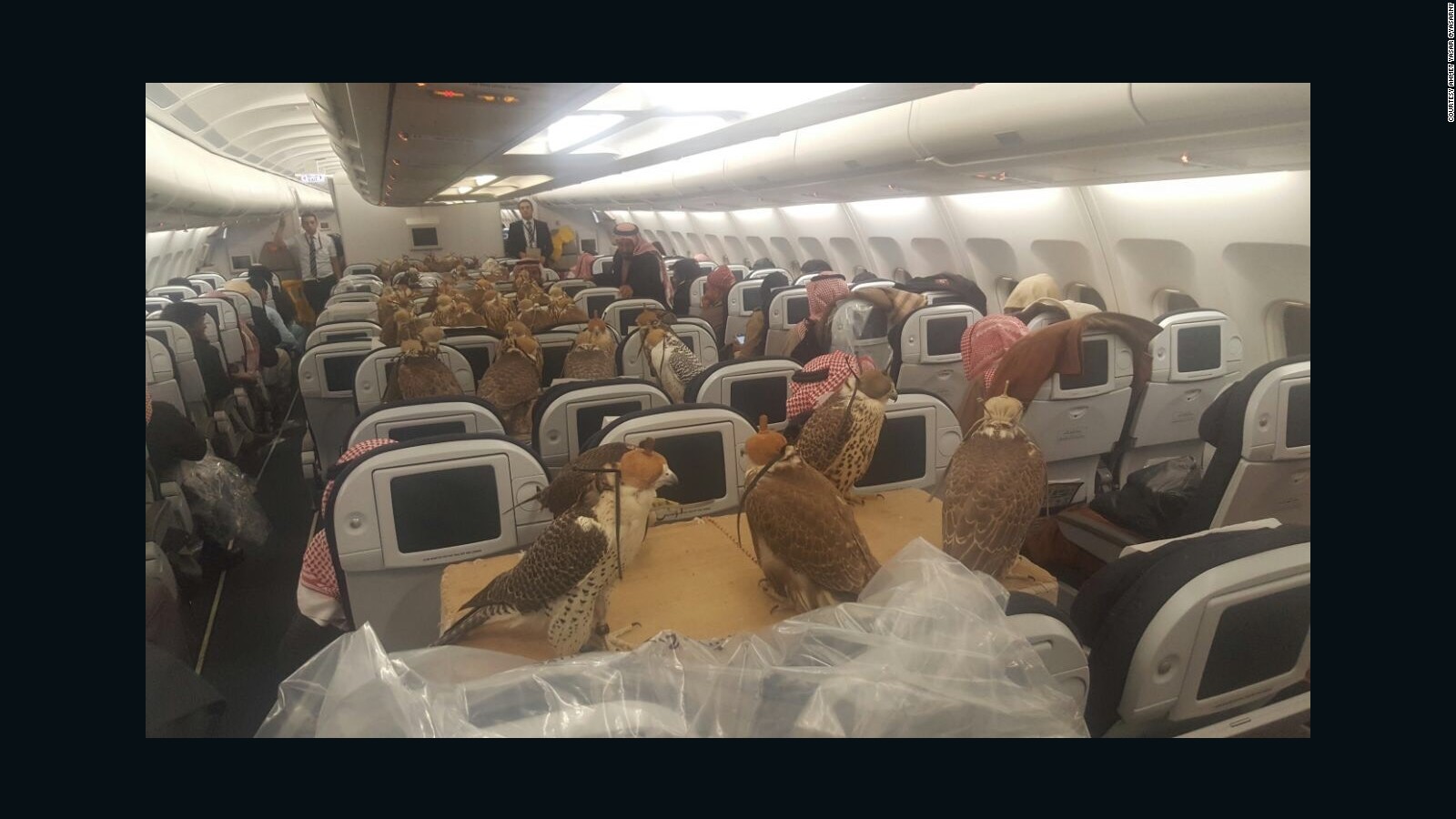
Ahmet Yasar posted this viral photograph of tens of falcons and says they were traveling to Jeddah in Saudi Arabia.
Story highlights
- Several Middle Eastern airlines allow passengers to take a falcon on board with them
- The birds are status symbols in the Middle East
(CNN)Have you ever boarded a flight dreading who might be your neighbor for the next few hours?
Maybe they'll snore, or encroach on your personal space, or perhaps it'll be a screaming baby.
Passengers flying on Qatar, Emirates, Etihad or Royal Jordanian Airlines, however, have a unique type of neighbor to worry about -- the pet falcon.
On these Middle Eastern airlines, the birds -- which have their own passports -- are permitted to fly, most often perching on their owners' arms.
Status symbol
In the Middle East, falcons are the ultimate status symbol.
And it's become routine for some falcon owners to have their birds join them, un-caged, aboard flights -- no matter if they're traveling in first class or economy.
This week, a photograph of a cabin full of the treasured birds went viral on social media.

Photos: The treasured sport of Falconry in the United Arab Emirates
Falconers in their four-by-four vehicle follow a hunting falcon at Al-Marzoom Hunting reserve, 150kms west of Abu Dhabi. The sport dates back thousands of centuries and has become such a significant part of the region's culture.
Hide Caption
5 of 8
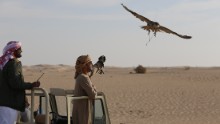
Photos: The treasured sport of Falconry in the United Arab Emirates
The birds can cost anywhere between 2,000 dirhams ($544) and 70,000 dirhams ($19,058), according toNasif Kayed from The Arab Culturalist.
Hide Caption
6 of 8
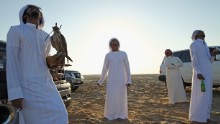
Photos: The treasured sport of Falconry in the United Arab Emirates
Emirati men watch as a small helicopter drone takes a lure consisting of a bundle of feathers up before letting their falcons catch it.
Hide Caption
7 of 8
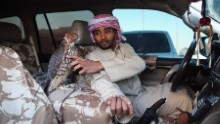
Photos: The treasured sport of Falconry in the United Arab Emirates
Traditionally, the birds were used as a way of obtaining food but nowadays they're kept as pets and used for sport. Owners develop a deep bond with their birds.
Hide Caption
8 of 8
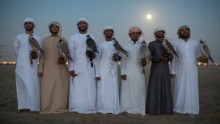
Photos: The treasured sport of Falconry in the United Arab Emirates
Emirati men pose with their Falcons after an evening training session. Groups of friends regularly come together in the evenings to meet and train their birds where the practice becomes more about camaraderie and sharing knowledge than subsistence.
Hide Caption
1 of 8
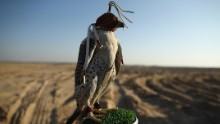
Photos: The treasured sport of Falconry in the United Arab Emirates
A falcon sits on a perch before being flown during an evening training session -- a cover is placed over its eyes to calm the bird down and ensure it doesn't fly off and hunt unexpectedly.
Hide Caption
2 of 8

Photos: The treasured sport of Falconry in the United Arab Emirates
Falconers spend around six weeks training their birds to catch prey, according to Nasif Kayed from The Arab Culturalist.
Hide Caption
3 of 8
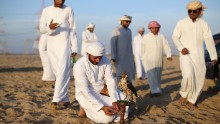
Photos: The treasured sport of Falconry in the United Arab Emirates
Falconry today has become more of a national sport and a rite of passage for many young Emirati men, who take their time to train their Falcons.
Hide Caption
4 of 8

Photos: The treasured sport of Falconry in the United Arab Emirates
Falconers in their four-by-four vehicle follow a hunting falcon at Al-Marzoom Hunting reserve, 150kms west of Abu Dhabi. The sport dates back thousands of centuries and has become such a significant part of the region's culture.
Hide Caption
5 of 8

Photos: The treasured sport of Falconry in the United Arab Emirates
The birds can cost anywhere between 2,000 dirhams ($544) and 70,000 dirhams ($19,058), according toNasif Kayed from The Arab Culturalist.
Hide Caption
6 of 8

Photos: The treasured sport of Falconry in the United Arab Emirates
Emirati men watch as a small helicopter drone takes a lure consisting of a bundle of feathers up before letting their falcons catch it.
Hide Caption
7 of 8

Photos: The treasured sport of Falconry in the United Arab Emirates
Traditionally, the birds were used as a way of obtaining food but nowadays they're kept as pets and used for sport. Owners develop a deep bond with their birds.
Hide Caption
8 of 8

Photos: The treasured sport of Falconry in the United Arab Emirates
Emirati men pose with their Falcons after an evening training session. Groups of friends regularly come together in the evenings to meet and train their birds where the practice becomes more about camaraderie and sharing knowledge than subsistence.
Hide Caption
1 of 8

Photos: The treasured sport of Falconry in the United Arab Emirates
A falcon sits on a perch before being flown during an evening training session -- a cover is placed over its eyes to calm the bird down and ensure it doesn't fly off and hunt unexpectedly.
Hide Caption
2 of 8

Photos: The treasured sport of Falconry in the United Arab Emirates
Falconers spend around six weeks training their birds to catch prey, according to Nasif Kayed from The Arab Culturalist.
Hide Caption
3 of 8

Photos: The treasured sport of Falconry in the United Arab Emirates
Falconry today has become more of a national sport and a rite of passage for many young Emirati men, who take their time to train their Falcons.
Hide Caption
4 of 8

Photos: The treasured sport of Falconry in the United Arab Emirates
Falconers in their four-by-four vehicle follow a hunting falcon at Al-Marzoom Hunting reserve, 150kms west of Abu Dhabi. The sport dates back thousands of centuries and has become such a significant part of the region's culture.
Hide Caption
5 of 8
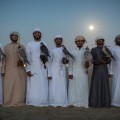

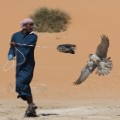

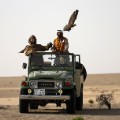
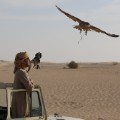
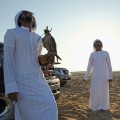
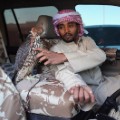
Ahmet Yasar, who posted the image on Reddit, told CNN that the falcons were traveling to Jeddah, in Saudi Arabia, and that the photograph was taken by a friend who works as a pilot.
While flying with falcons in the cabin area is not unusual, to have this many on board at the same time is extremely rare -- with commercial airlines usually restricting flights to a maximum of six falcons at one time.
A symbol of courage, determination and freedom
Falconry, the sport of hunting with falcons, dates back hundreds of centuries and has become such a significant part of the Middle East's culture that UNESCO has added it to its Intangible Cultural Heritage of Humanity list.
Traditionally, the birds were used as a way of obtaining food but nowadays they're kept as pets and used for sport.
Cultural expert Nasif Kayed, from The Arab Culturalist,told CNN falcons can cost anywhere between 2,000 dirhams ($544) and 70,000 dirhams ($19,058).
"It depends on what you're looking for and how much money you have, of course," he said. "It depends on the breed -- some are (bred) for speed, others are for long distance hunting."
In the United Arab Emirates, the birds are required to have their own passports, issued by the Ministry of Environment and Water, to combat smuggling of the birds. The document is valid for three years and costs about $130.
Between 2002 and 2013, the government issued more than 28,000 falcon passports.
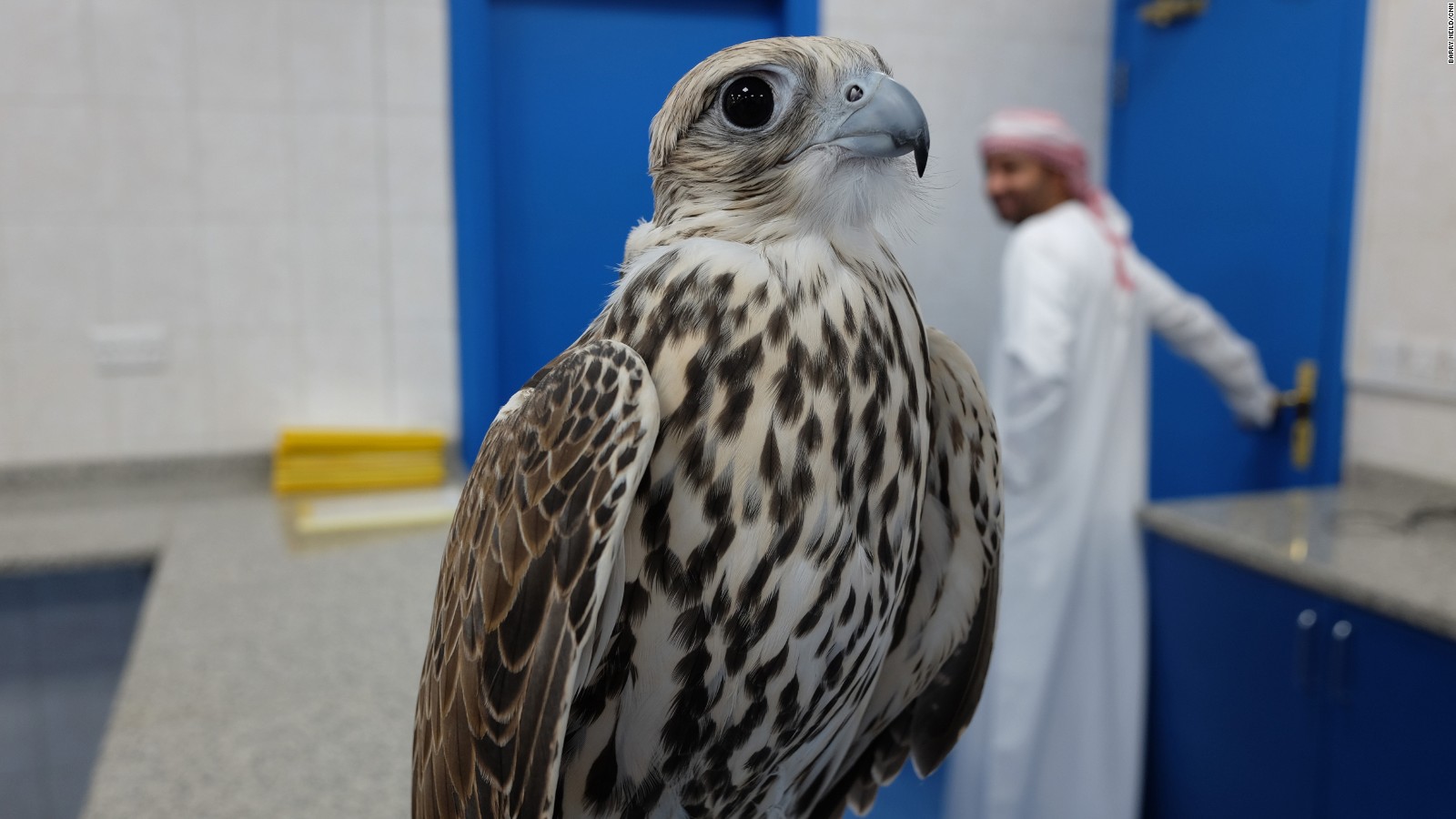
In the UAE, falcons are symbols of national pride.
Kayed says the birds can be trained within a matter of six weeks and Emirati men develop a strong relationship with the animals.
"For us, they represent courage, perseverance, determination and freedom."
What's it like to sit next to one?
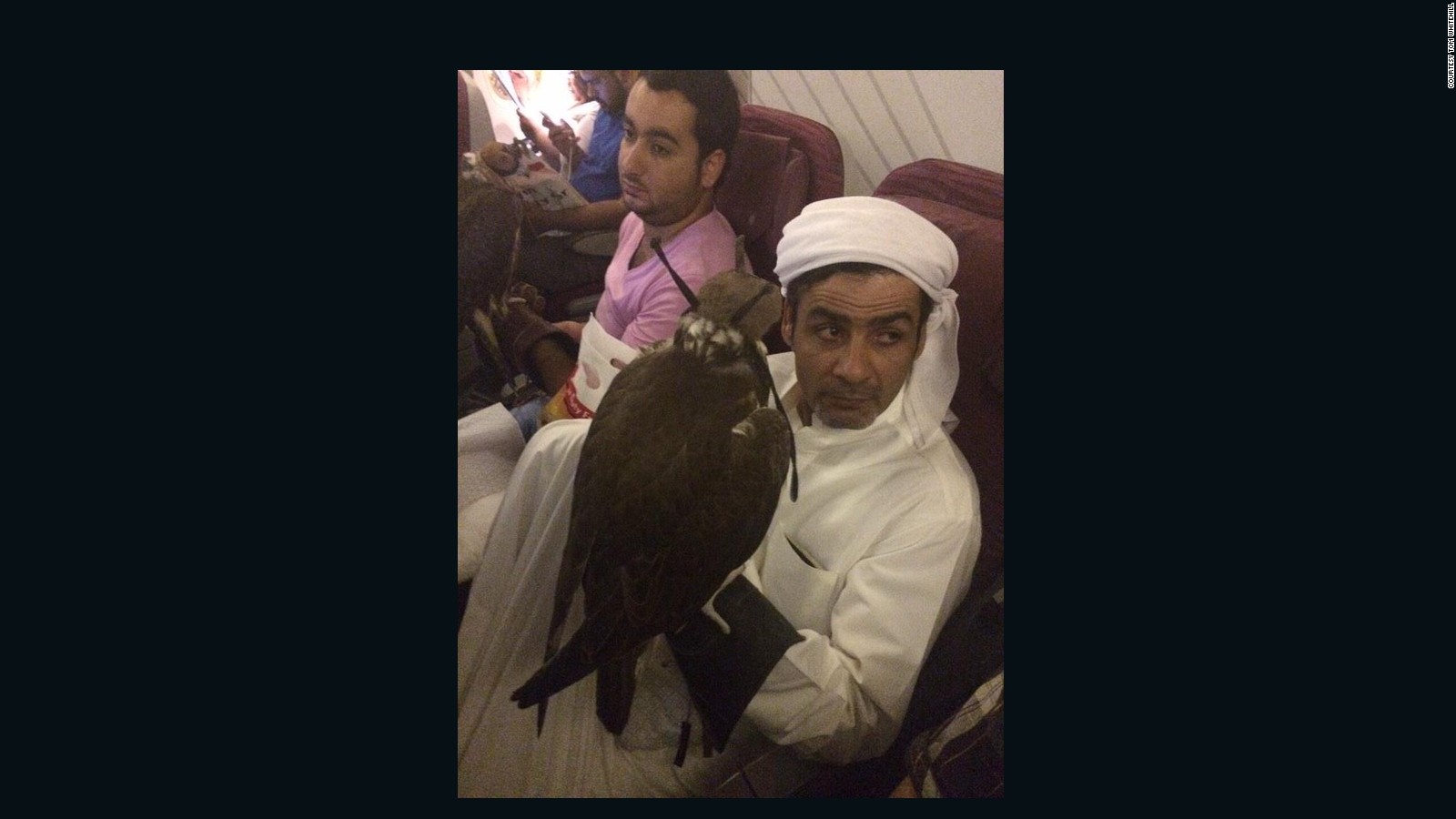
Qatar, Etihad, Emirates and Royal Jordanian Airlines allow falcons in their cabin area.
In 2014, Tom Whitehill took a Qatar Airways flight from Dubai to Doha and experienced traveling with the falcons first-hand.
"It was quite strange, there was no warning that they were going to be on the flight," he told CNN.
"I had heard plenty of stories of falcons flying throughout the Gulf in the cabin of the aircraft, but had not seen it before -- it was a nice surprise, but definitely a bit surreal."
Whitehill said the birds weren't noisy, and barely caused a fuss -- except for when the plane came into landing.
"They had hoods on, so they were quite calm and relaxed until we started to land and they started to flap their wings," he said.
Cultural expert, Kayed, said owners usually covered the birds' eyes to keep them "at peace" -- "because when they see (something) they have to go and get it."
So, which airline can you take your falcon on?
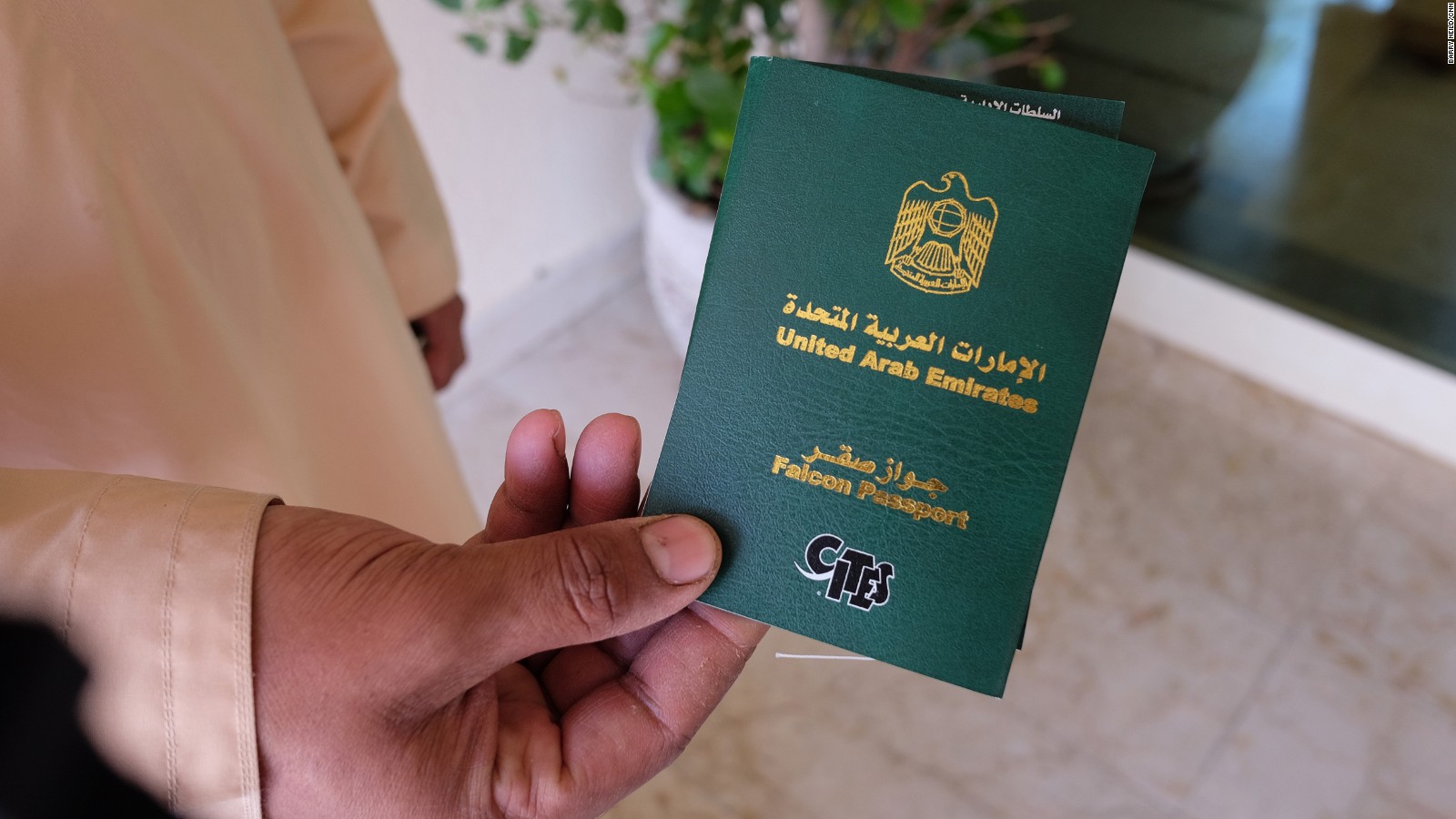
Falcons even get their own passports to travel on board flights in the UAE.
While the owner of the falcons in the picture that went viral this week appears to have bought a ticket for each bird, some airlines permit passengers to fly with their bird in their seat.
According to its website, Qatar Airways will allow a passenger to travel with one falcon as an economy class passenger and a maximum of six falcons are permitted within the entire cabin -- but you'll have to pay for it, with rates ranging from $115 to $1,620 per bird.
Etihad has similar regulations for flying with falcons, but Emirates requires all animals traveling in the cabin to be caged.
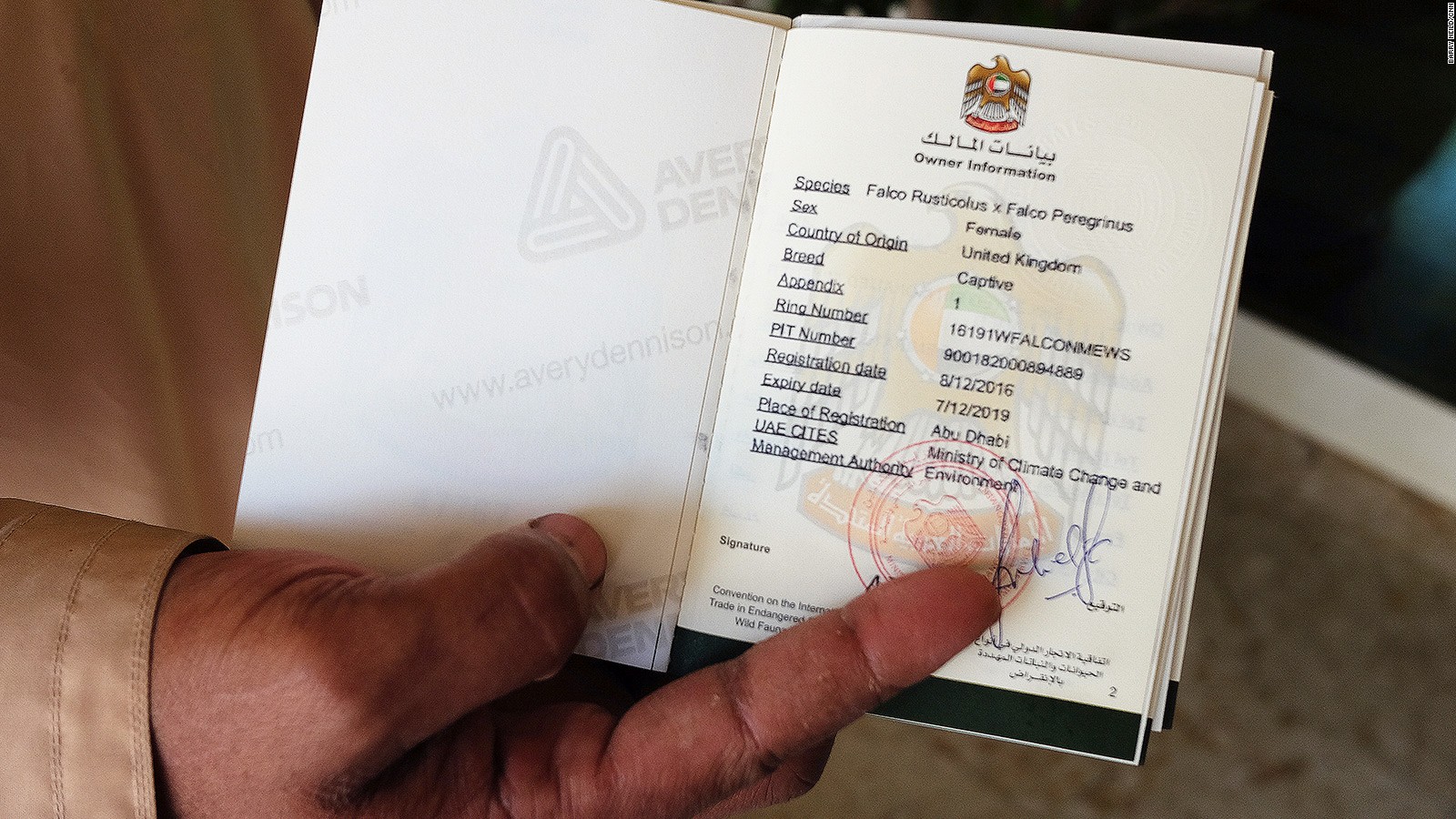
Inside the falcon's passport, it details the bird's ID number which matches the ID ring on its leg.
Royal Jordanian Airlines is slightly more accommodating, and allows two falcons per seat and a maximum of 10-15 falcons in the cabin at one time, depending on the aircraft. But such passengers will also be charged three times the normal excess baggage rate.
German airline Lufthansa has hinted that it might allow passengers to carry their falcons on board in the future -- it developed a prototype bird stand in 2014, called the "Falcon Master", for VIP customers.
While it still hasn't been installed, a spokesman for the airline told CNN they were in talks with several potential customers.
"Our intention was and still is to offer this very special product to a small group of private and VIP customers who (are) traveling in a private jet with birds like falcons."

ไม่มีความคิดเห็น:
แสดงความคิดเห็น